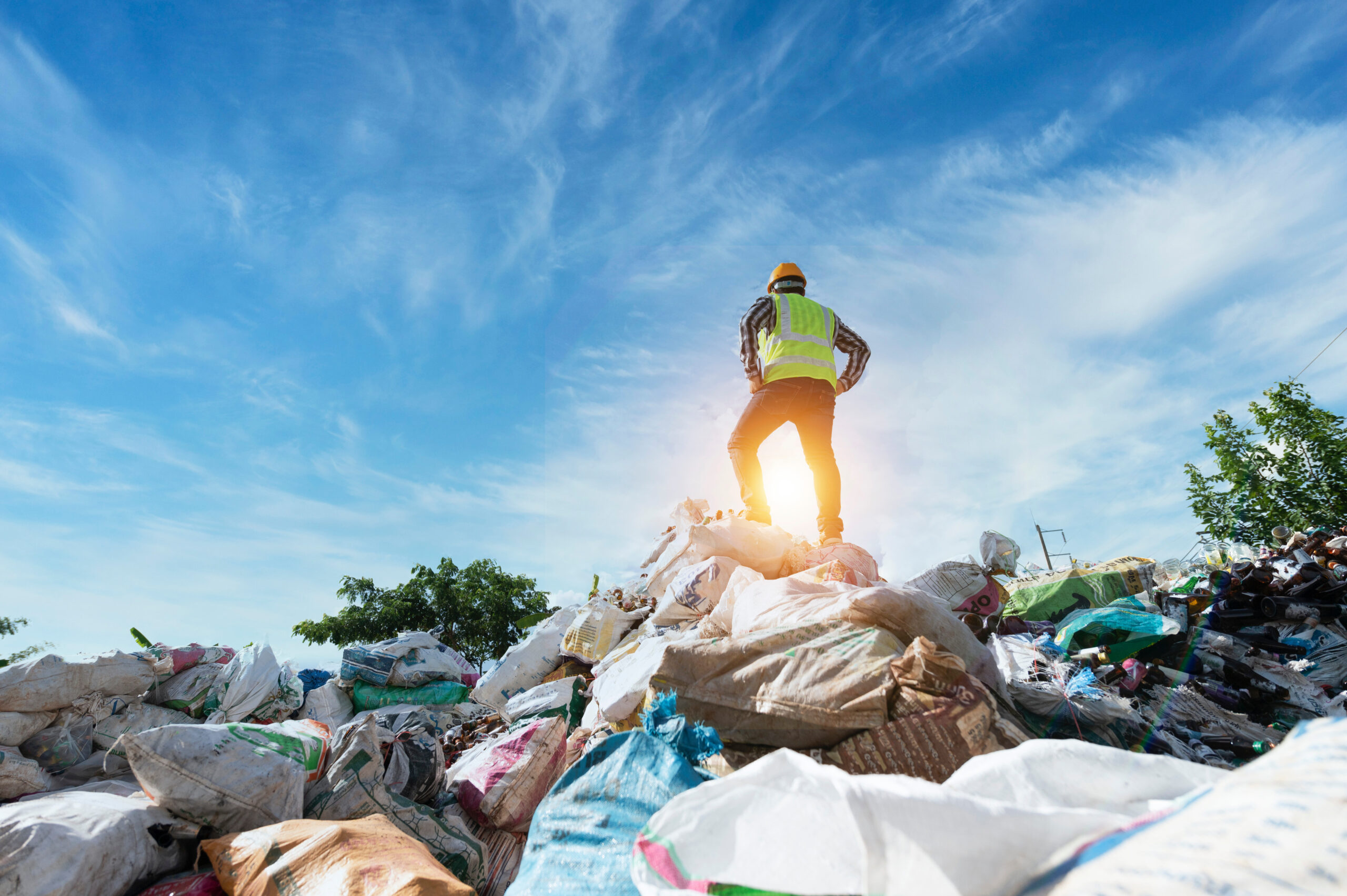The Hidden Challenge After the Storm
When most people think about disaster recovery, especially after hurricanes they think about restoring power, fixing roads, reopening schools, and getting clean water flowing again. All of these are critical steps, of course. But there’s another part of recovery that rarely makes the headlines and is just as essential: solid waste management.
After a major storm hits whether it’s a Category 5 hurricane or a tropical system that lingers and floods, the amount of debris left behind is staggering. Broken trees, ruined furniture, shattered glass, spoiled food, damaged vehicles, and building materials are suddenly everywhere. It doesn’t take long before waste becomes more than just an inconvenience it becomes a public health hazard. That’s why I believe solid waste management must be treated as a front-line service in any post-disaster recovery plan, not an afterthought.
What Hurricanes Leave Behind
Over the years, especially in the U.S. Virgin Islands, I’ve seen the aftermath of many major storms up close. One of the most immediate and visible effects is the overwhelming amount of solid waste. In the days following a hurricane, you see entire neighborhoods piled with debris: drywall, mattresses, refrigerators, fallen utility poles, and more.
This type of waste can’t be managed through normal trash pickup. It’s bulky, mixed with hazardous materials, and often contaminated. In these moments, the usual systems break down, and unless you have a plan in place to manage it quickly and safely, that debris starts to affect everything else: health, safety, transportation, and even morale.
Waste and Public Health: An Urgent Connection
Piles of storm debris aren’t just unsightly, they’re dangerous. Rotten food and dead animals attract pests. Standing water in discarded containers breeds mosquitoes. Damaged electronics and building materials can contain chemicals that leach into the ground and water supply. Add the summer heat, and you’ve got the perfect conditions for disease outbreaks and toxic exposure.
This is why solid waste cleanup is not just a question of logistics. It’s a question of public health. Communities can’t begin to recover physically or emotionally until their environment is safe, clean, and livable again.
Planning Ahead: Waste Management as Infrastructure
Solid waste management systems should be considered critical infrastructure, just like water, energy, and transportation. Unfortunately, in many places especially smaller or underfunded communities waste management is often under-resourced even before a disaster hits.
We need to change that thinking. Part of being resilient is being ready to manage the waste that will inevitably follow a storm. That means having the right contracts in place with hauling companies before the storm. It means designating temporary debris staging areas. It means training staff and community volunteers in safe cleanup procedures and knowing what types of waste can be recycled, composted, or safely disposed of.
Technology and Tools That Make a Difference
New technologies can help us respond more effectively. GIS mapping can be used to identify hard-hit areas and route cleanup teams more efficiently. Drones can assess debris fields quickly. Mobile compactors can reduce waste volume in remote or overburdened areas. And improved data systems can help governments track recovery progress and adjust resources where they’re needed most.
But these tools only work if the strategy is in place before the storm. We can’t afford to scramble after the fact.
Community Involvement and Public Communication
Another overlooked aspect of post-disaster cleanup is the role of the community. People want to help. But they need clear instructions. Where should they bring storm debris? What should be separated: wood, metals, hazardous waste? Are there pick-up schedules? Are there drop-off points for spoiled food or large appliances?
Good public communication whether through radio, television, text alerts, or social media is crucial. The better informed the public is, the smoother and faster the cleanup goes. Involving local leaders and neighborhood groups in these efforts helps build trust and encourages cooperation, which is invaluable in chaotic times.
Lessons from the U.S. Virgin Islands
In the U.S. Virgin Islands, we’ve had to learn these lessons the hard way. Hurricanes Irma and Maria in 2017 left behind over a eight hundred thousand cubic yards of debris, far more than we had ever dealt with before. The cleanup took months and required coordination between local government, FEMA, private contractors, and the community. It wasn’t perfect, but it showed us how critical it is to treat waste management as an emergency service.
Since then, we’ve improved our protocols, secured emergency contracts, and educated the public about what to expect. But there’s always more work to be done, and every storm is a reminder of how important this effort really is.
Looking Forward: A Smarter Approach to Recovery
As climate change increases the intensity and frequency of storms, communities especially in coastal and island regions must rethink how they prepare for and respond to disasters. Waste management cannot be left out of the conversation. It must be part of every preparedness plan, every recovery discussion, and every funding strategy.
We need to advocate for policies that recognize solid waste as essential infrastructure. We need to invest in equipment, people, and systems that can respond fast and safely. And we need to keep learning from each storm, improving our processes so that our communities can recover stronger, faster, and cleaner.
A Clean Slate Is the First Step Toward Healing
Disasters are traumatic. They leave scars not just on landscapes, but on the hearts and minds of the people who live through them. But I’ve seen how powerful it can be when neighborhoods begin to look clean again. When the streets are cleared and the debris is gone, people begin to feel hopeful. That first bag of trash hauled away, that first load of debris picked up, that’s when recovery truly begins.
Solid waste management might not be the most visible part of rebuilding, but it’s one of the most meaningful. And I’m proud to be part of a field that helps communities start over with dignity, resilience, and a clear path forward.
